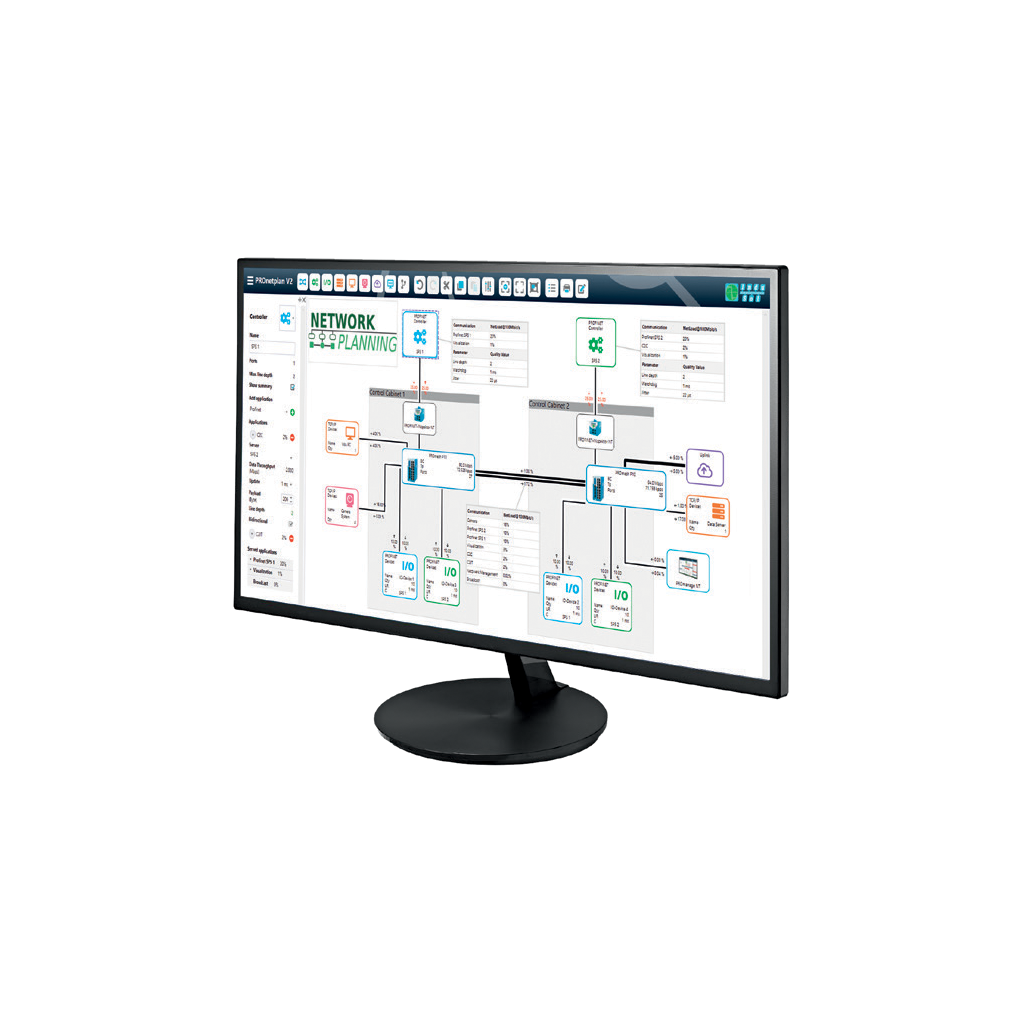OT / IIT / IIoT Network Architecture & Digitalization
How modern industrial networks enable energy management, condition monitoring, and reliable data access.
Open OT networks securely – implement digitization efficiently
Anyone who wants to implement digitization projects, e.g. for energy management, inventory, condition monitoring or preventive maintenance concepts, knows the challenge: How do we get the data? The controls of machines and plants, the actual source of data, are often associated with self-contained networks and deny themselves any access from the outside. And this is by no means out of ill will, but because security and functional reliability are equated with isolation. However, anyone who wants to drive digitization projects forward efficiently should be able to use as much of the data as possible that is already available in machines. In this context, the network as a whole plays a central role. It must be well planned, sensibly segmented, optimized to the respective requirements, monitored and, above all, understood as such.
Today, however, a good 50% of digitization projects are doomed to failure (source: www.service-report-it.de) or are at least severely restricted or postponed for cost reasons because the resources to be expended on data acquisition exceed the planned budget. For example, in energy management, data is currently obtained using additional energy meters and queried via a separately installed network. These additional cost drivers make the project complicated, confusing and require additional maintenance and servicing.
Our adjusting screws for your success:
- Plan OT networks according to the requirements of function and digitization
- Intensification of the exchange between operator and installer
- Highlighting data treasures – leveraging existing resources
- Bringing IIT and OT together without hurdles and barriers
- Determining responsibilities
- Establishment of access rules, their control and implementation
Learn more about Network Planning
Achieve your digitization goals with us
Efficient Energy Management
- Avoidance of load peaks
- Identification of nominal current deviations
- Consumption forecasts for purchasing optimization
Permanent Condition Monitoring
- Reduction of throughput times
- Avoidance of downtimes
- Securing availability
Preventive Maintenance
- Avoiding breakdowns
- Guarantee network stability
- Be able to act before it is too late
Automated Inventory
- Overview of all assets and vulnerabilities
- Exposure of the security vulnerable devices
Planned implementation instead of complicated temporary solutions
Whether you have an established facility or a new one, say goodbye to transitional solutions and outdated procedures. Our expert guidance will show you how to optimize your plant networks, unlocking economic benefits and reducing maintenance costs for tomorrow.
> Data volume in individual plant networks is constantly increasing
Machines and plants are becoming increasingly complex, equipped with more sensors and data sources. Despite the growing data volume (network load ↗), it remains crucial to transport prioritized process data seamlessly and in real-time, without any losses.
> Exchange of process data across plants (plant networking)
If several systems are operated in parallel, they often have to exchange comprehensive process data. In addition to ensuring smooth data exchange, these connections must meet all the requirements for network performance and security.
> Network communication has evolved to be more versatile and expansive
In addition to pure process communication (e.g., only PROFINET), modern industrial networks must also be able to handle various communication protocols and applications. Unplanned networks can quickly reach their limits when these networks are exchanging prioritized process data and additional data from connected network cameras, user panels, and other devices.
What does this mean for operators of industrial plants?
For both existing and new plants, machine networks must be prepared to ensure smooth operation and secure data exchange. By doing so, you can establish a solid foundation for the digital transformation of your machine processes. This proactive approach helps avoid costly structural adjustments and maintenance procedures during the operating phase. If this sounds interesting to you, consider planning your networks with InduSol America.
What does this mean for industrial plant manufacturers?
Industrial plant networks must be able to adapt to changing requirements and the growing need for connectivity. By engaging in targeted network planning, you can proactively identify potential weak points in the structure and infrastructure. This allows for simplified commissioning, even amidst increasing complexity.
Industrial networks in transition – a short explanation
- Convenient network planning via drag-and-drop
- Intuitive network load pre-planning
- Planning of copper, fibre-optic and WLAN-based network connections
- Creation of communication relationships between components
Need help planning your industrial network?
Talk with our engineering team about PROFINET/PROFIBUS/OT–IT integration, segmentation, and network load planning.
Book a Free Consultation →
